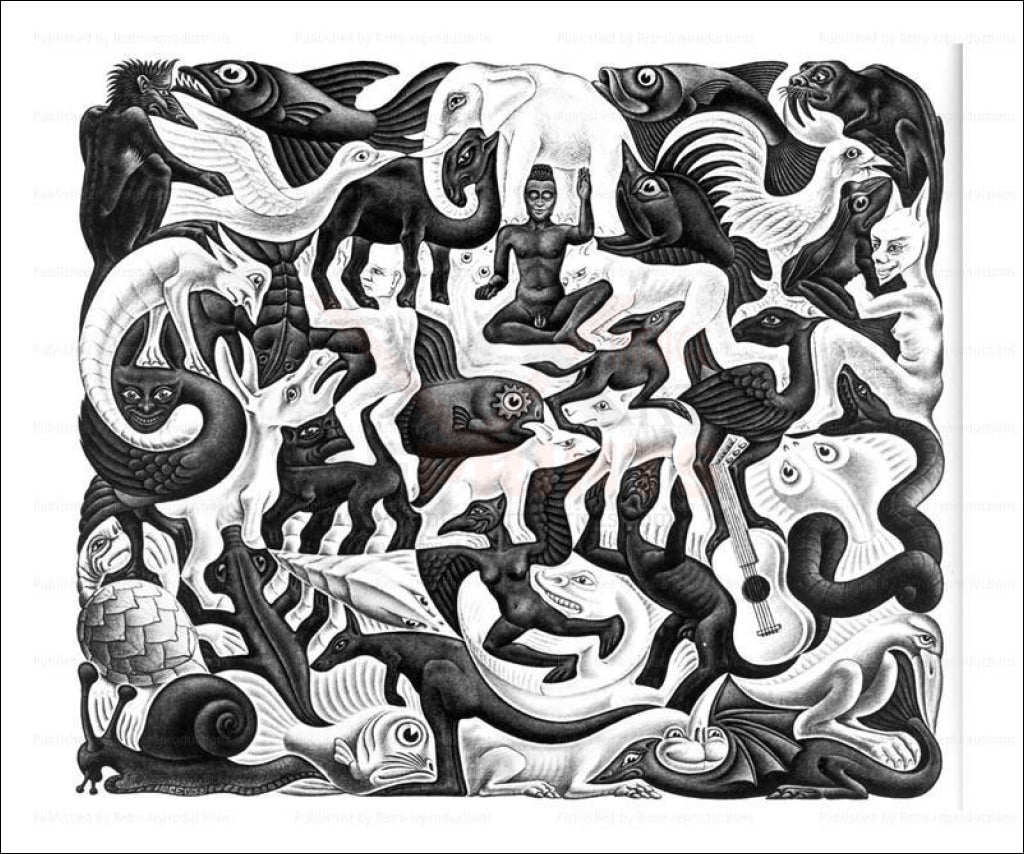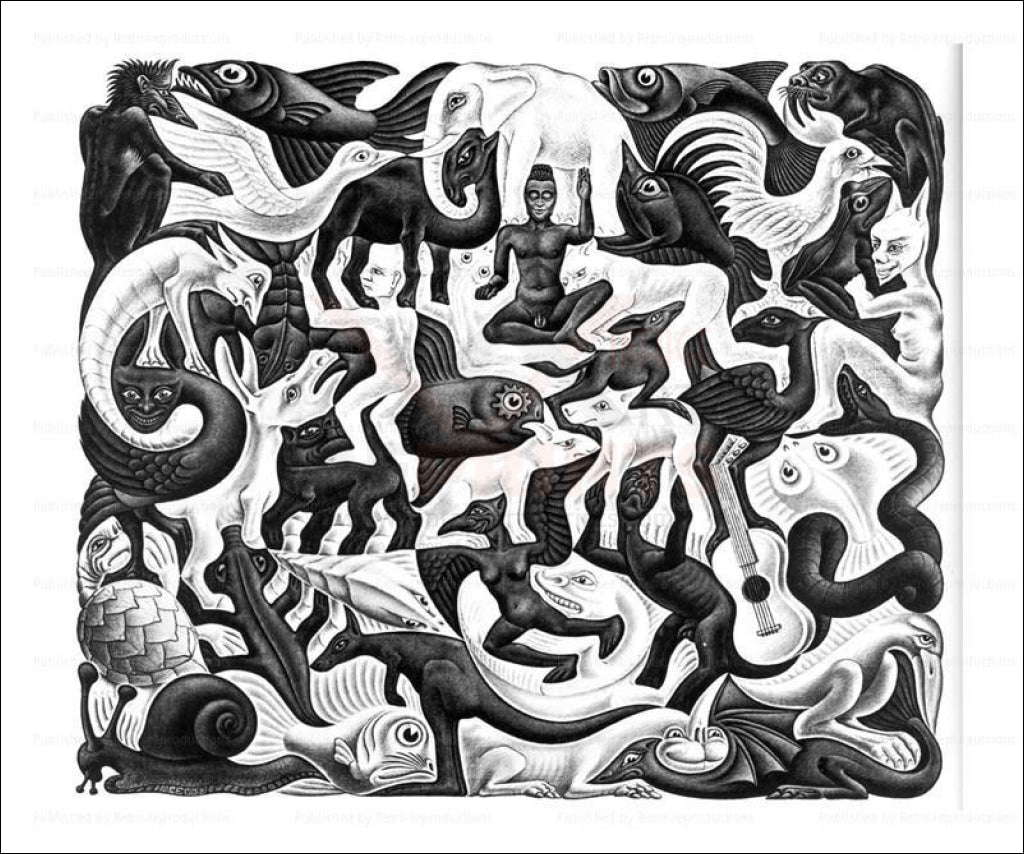1
/
of
1
Remplissage, Maurits Cornelis Escher
Remplissage, Maurits Cornelis Escher
Regular price
$39.00 USD
Regular price
Sale price
$39.00 USD
Unit price
/
per
Shipping calculated at checkout.
Couldn't load pickup availability
Share
Escher’s mature style emerged after 1937 in a series of prints that combined meticulous realism with enigmatic optical illusions. Working in lithograph, wood engraving, and woodcut, he portrayed with great technical virtuosity impossible architectural spaces and unexpected metamorphoses of one object into another. Sometimes referred to as the “father of modern tessellations,” Escher commonly used geometric grids to form intricate interlocking designs. His series Regular Division of the Plane (begun in 1936) is a collection of his tessellated drawings, many of which feature animals. He also explored mezzotint, a demanding and precise technique involving metal engraving, with which he produced some of his famous works in black and white, including Eye (1946), Gallery (1946), Crystal (1947), and Dewdrop (1948). In all, Escher composed some 450 lithographs, woodcuts, and wood engravings and about 2,000 drawings and sketches in his lifetime. His images were of equal interest to mathematicians, cognitive psychologists, and the general public, and they were widely reproduced throughout the 20th century.
View full details

-
High Quality Reprints
Every piece of art is printed using premium materials. We carefully package and deliver your order to your door.
-
Wholesale Orders
We welcome wholesale inquiries on some of our products. Click here to learn more about our offering.
Sign Up for Our Newsletter
Get a sneak peek on upcoming promos and get 10% off your first order.

